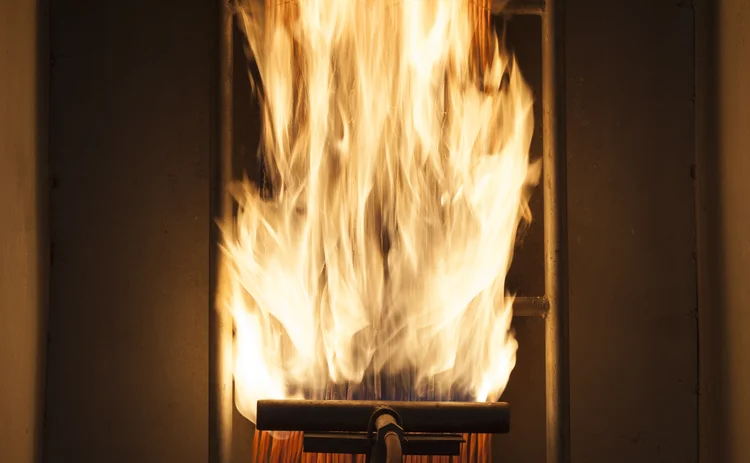
Legal Update: The Legacy of the Grenfell Tower Fire

Need to know
- The Aluminium Composite Material cladding system on Grenfell Tower is believed to have contributed to the rapid spread of the fire
- Professionals who were involved in the design, specification or installation of cladding systems are now alleged to be in breach of the Building Regulations
- Tests of the core material of ACM panels to determine whether they are of ‘limited combustibility’ shows widespread failure
Following the Grenfell disaster earlier this year Hill Dickinson partner Jonathan Anslow believes there is likely to be an influx of claims arising from the design, specification and installation of cladding systems.
The Aluminium Composite Material cladding system on Grenfell Tower is believed to have contributed to the rapid spread of the fire. The Department for Communities and Local Government has commissioned extensive testing of ACM cladding systems used on high rise buildings to determine whether they comply with Building Regulations. There has been widespread failure.
As a result, there are already a number of claims against construction professionals who were involved in the design, specification and/or installation of cladding systems that are now alleged to be in breach of the Building Regulations.
Building Regulations
Paragraph B4 of Schedule 1 to the Building Regulations 2010 provides: “The external walls of the building shall adequately resist the spread of fire over the walls and from one building to another, having regard to the height, use and position of the building”.
Approved Document B Paragraph 12.7 sets out how this might be achieved although it is possible to achieve compliance with the Building Regulations by other methods: “In a building with a storey 18m or more above ground level any insulation product, filler material (not including gaskets, sealants and similar) etc. used in the external wall construction should be of limited combustibility.”
Table A7 sets out the technical requirements for “insulation material in external wall construction, referred to in paragraph 12.7” to be of “limited combustibility”.
As an alternative to the requirement for “limited combustibility”, paragraph 12.5 of ADB provides that the external walls can “meet the performance criteria given in the Building Research Establishment Report Fire Performance of external thermal insulation for walls of multi storey buildings (BR135) for cladding systems using full scale test data from BS 8414-1 (2002) or BS 8414 -2 (2005)”
Tests of the core material of ACM panels used on high rise buildings to determine whether they are of ‘limited combustibility’ as per paragraph 12.7 of ADB shows widespread failure. A second phase of testing has been commenced to see whether various combinations of ACM cladding with different types of insulation will instead satisfy paragraph 12.5 of ADB. So far they have tested ACM panels with a polyethylene core (one of the more combustible core materials), combined with (a) polyisocyanurate foam insulation (one of the most combustible types of insulation); and (b) mineral wool insulation (which is of ‘limited combustibility’). Both combinations, which are found on approximately 200 buildings the DCLG are investigating, have failed and remedial works are recommended.
The main issue that has emerged from the claims seen to date is whether the requirement of limited combustibility applies to the core material of ACM panels, which many agree is not insulation. The DCLG says that it does, referring to the core material as ‘filler’. However, paragraph 12.7 of ADB is headed “Insulation Materials/Products” and refers to Table A7 which only refers to “insulation material in external wall construction”. As such, while the body of the paragraph itself refers to ‘filler’ this would only appear to be in the context of insulation.
What Does The Future Hold?
There is likely to be an influx of claims arising from the design, specification and/or installation of cladding systems over the coming months. Insurers will, therefore, need to prepare for this and may want to consider an insured’s involvement in projects involving high rise cladded buildings when issuing or renewing policies.
Only users who have a paid subscription or are part of a corporate subscription are able to print or copy content.
To access these options, along with all other subscription benefits, please contact info@postonline.co.uk or view our subscription options here: http://subscriptions.postonline.co.uk/subscribe
You are currently unable to print this content. Please contact info@postonline.co.uk to find out more.
You are currently unable to copy this content. Please contact info@postonline.co.uk to find out more.
Copyright Infopro Digital Limited. All rights reserved.
As outlined in our terms and conditions, https://www.infopro-digital.com/terms-and-conditions/subscriptions/ (point 2.4), printing is limited to a single copy.
If you would like to purchase additional rights please email info@postonline.co.uk
Copyright Infopro Digital Limited. All rights reserved.
You may share this content using our article tools. As outlined in our terms and conditions, https://www.infopro-digital.com/terms-and-conditions/subscriptions/ (clause 2.4), an Authorised User may only make one copy of the materials for their own personal use. You must also comply with the restrictions in clause 2.5.
If you would like to purchase additional rights please email info@postonline.co.uk








